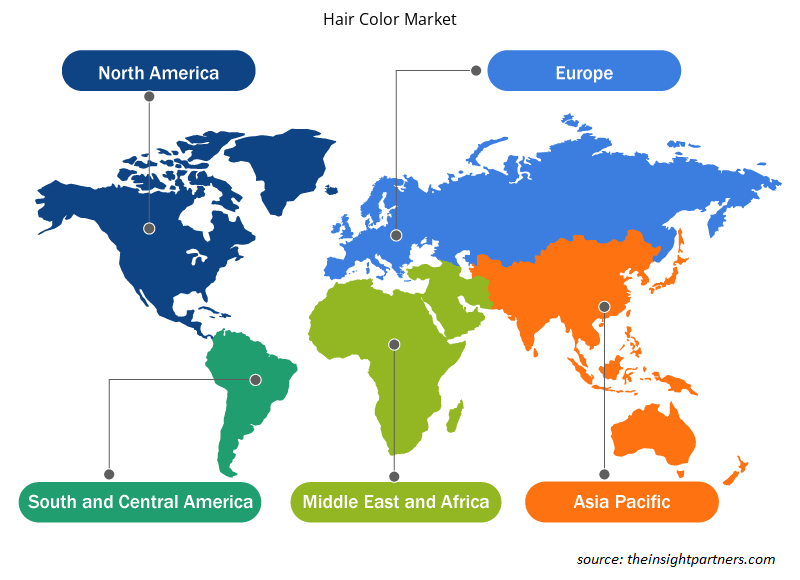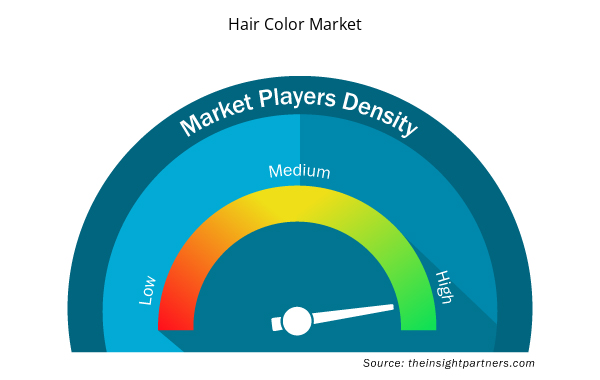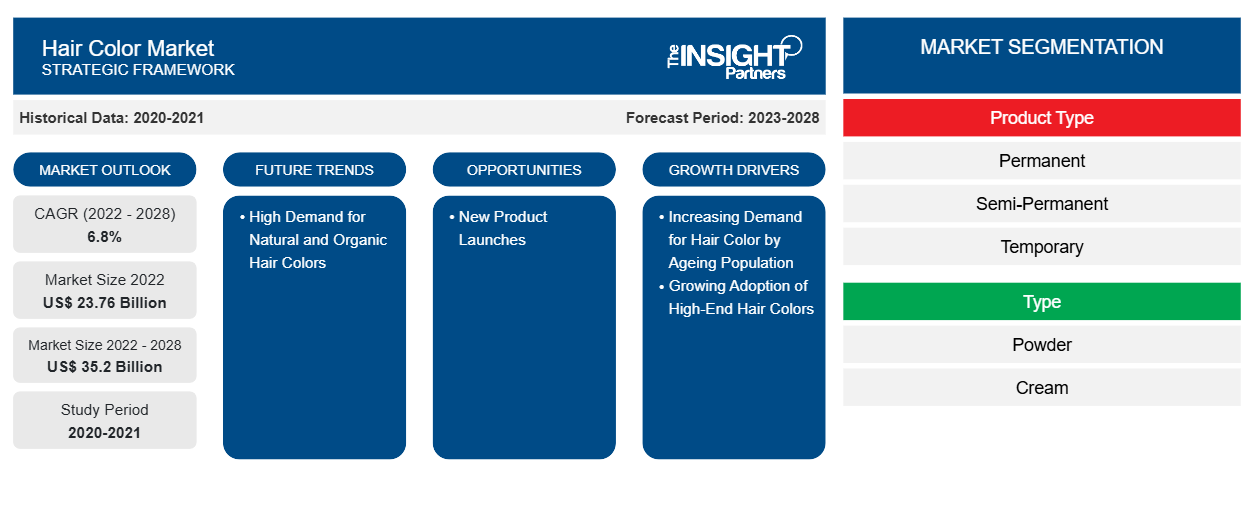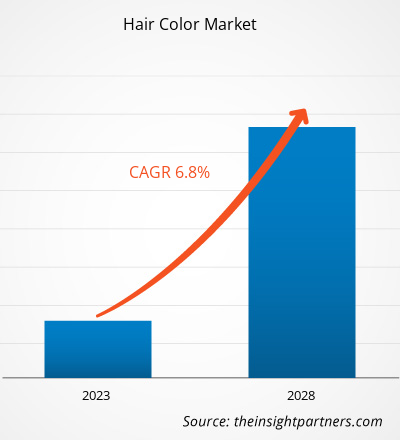[研究报告] 染发市场预计将从 2022 年的 237.6228 亿美元增长到 2028 年的 352.0169 亿美元;预计2022 年至 2028 年的复合年增长率为 6.8%。
报告重点介绍了推动市场发展的关键因素和知名参与者以及他们在市场中的发展。
市场洞察和分析师观点:
染发剂是用于遮盖白发或改变头发自然颜色的染发剂。染发剂基本上有三种类型:永久性、半永久性和暂时性。永久性染发剂可以永久改变自然发色,通常效果最佳。染发剂有各种颜色可供选择,如黑色、棕色和酒红色。消费者非常关注自己的外表,这导致对个人美容产品的需求巨大。这一因素推动了染发剂市场的发展。此外,老龄化人口的增加也是推动染发剂和染料需求的主要因素之一。
增长动力和挑战:
老龄人口对染发的需求不断增长,推动了染发市场的增长。根据《2019 年世界人口老龄化评论》,全世界 65 岁或以上人口超过 7.03 亿。由于生育率下降和寿命或预期寿命增加,世界人口正在迅速老龄化。老龄人口广泛使用染发剂来遮盖白发。这一因素极大地推动了对染发的需求。此外,由于生活方式的改变和营养不良,过早白发的发生率不断上升。由于日常压力、不良的饮食习惯、吸烟和某些医疗条件,人们的头发过早变白。这一因素也有望刺激对染发剂的需求,从而推动染发市场的增长。
定制此报告以满足您的需求
您可以免费定制任何报告,包括本报告的部分内容、国家级分析、Excel 数据包,以及为初创企业和大学提供优惠和折扣
- 获取此报告的关键市场趋势。这个免费样品将包括数据分析,从市场趋势到估计和预测。
报告细分和范围:
“全球染发市场”根据产品类型、种类、分销渠道和地理位置进行细分。根据产品类型,染发市场分为永久性染发、半永久性染发和临时性染发。根据类型,染发剂市场分为粉末、乳霜和其他。根据分销渠道,染发剂市场分为超市和大卖场、专卖店、在线零售和其他。根据地域,染发剂市场分为北美(美国、加拿大和墨西哥)、欧洲(德国、法国、意大利、英国、俄罗斯和欧洲其他地区)、亚太地区(澳大利亚、中国、日本、印度、韩国和亚太地区其他地区)、中东和非洲(南非、沙特阿拉伯、阿联酋和中东和非洲其他地区)以及南美洲和中美洲(巴西、阿根廷和南美洲和中美洲其他地区)
节段分析:
根据分销渠道,染发剂市场分为超市和大卖场、专卖店、在线零售和其他。超市和大卖场在染发剂市场中占有相当大的份额,预计在线零售市场在预测期内将出现显着增长。超市和大卖场是大型零售机构,以实惠的价格提供各种本地和高端品牌的产品。此外,这些商店拥有合格的员工,可帮助根据客户要求寻找产品。此外,这些商店设有单独的化妆品和个人护理产品区,帮助客户方便无忧地购物。这些因素推动了染发剂通过超市和大卖场的销售。
根据类型,染发剂市场分为粉末、乳霜和其他。2022 年,粉末部分占据了最大的市场份额。大量消费者更喜欢乳霜型染发剂,因为它们易于使用。此外,它们还含有保湿成分,可使头发柔软并增加光泽。这些因素极大地推动了该细分市场的增长。
区域分析:
根据地理位置,染发市场分为五个主要区域:北美、欧洲、亚太、南美和中美以及中东和非洲。全球染发市场以亚太地区为主,2022 年市场规模为 77.4175 亿美元。北美是第二大贡献者,在全球市场占有超过 26% 的份额。亚太地区的化妆品行业正在增长,对高端产品的需求不断增加,职业女性的数量也在增加。此外,该地区的人口老龄化进一步促进了染发市场的增长。根据世界卫生组织 (WHO) 的数据,中国是世界上老龄人口增长最快的国家之一。由于预期寿命延长和生育率下降,预计到 2040 年,中国 60 岁以上人口将达到 28%。因此,个人护理需求的增加,加上职业女性数量的增加和人口老龄化,预计将推动整个亚太地区的染发市场增长。
行业发展和未来机遇:
以下列出了染发市场主要参与者采取的各种举措:
- 2022 年,北极狐推出了一款新的染发剂 Space Cowgirl,颜色鲜艳,带有绿色色调或桃色色调。这款新产品可以与海蓝宝石、海神、霓虹月、冰玫瑰或长春花按公司提供的不同比例混合,为头发带来不同的色调。
- 2022 年,PZ Cussons 宣布收购 Childs Farm,后者是英国婴幼儿个人护理市场的领先品牌,占有该类别 15% 的市场份额。产品线包括沐浴和淋浴、护肤和护发,均以天然为基调,适合敏感肌肤。
- 2022 年,欧莱雅公司宣布推出专为消费者设计的 Colorsonic 和专为造型师设计的 Coloright 技术。该公司与 400 名客户合作开发 Colorsonic 产品。该产品包含一个色盒(40 种颜色)、一个搅拌器(混合颜色并为客户开发)和一个梳子涂抹器。此外,Coloright 技术专注于在染色过程中创造一致性并添加数据洞察。
染发市场区域洞察
Insight Partners 的分析师已详尽解释了预测期内影响染发市场的区域趋势和因素。本节还讨论了北美、欧洲、亚太地区、中东和非洲以及南美和中美洲的染发市场细分和地理位置。

- 获取染发市场的区域特定数据
染发市场报告范围
| 报告属性 | 细节 |
|---|---|
| 2022 年市场规模 | 237.6亿美元 |
| 2028 年市场规模 | 352亿美元 |
| 全球复合年增长率(2022 - 2028) | 6.8% |
| 史料 | 2020-2021 |
| 预测期 | 2023-2028 |
| 涵盖的领域 | 按产品类型
|
| 覆盖地区和国家 | 北美
|
| 市场领导者和主要公司简介 |
|
染发市场参与者密度:了解其对业务动态的影响
染发市场正在快速增长,这得益于终端用户需求的不断增长,而这些需求又源于消费者偏好的不断变化、技术进步以及对产品优势的认识不断提高等因素。随着需求的增加,企业正在扩大其产品范围,进行创新以满足消费者的需求,并利用新兴趋势,从而进一步推动市场增长。
市场参与者密度是指在特定市场或行业内运营的企业或公司的分布情况。它表明在给定市场空间中,相对于其规模或总市场价值,有多少竞争对手(市场参与者)存在。
在染发剂市场运营的主要公司有:
- 白狐
- 科蒂公司
- 汉高股份公司
- 花王新加坡私人有限公司
- 大号
免责声明:上面列出的公司没有按照任何特定顺序排列。

- 获取染发市场顶级关键参与者概述
Covid-19的影响:
COVID-19 疫情影响了各国几乎所有行业。北美、欧洲、亚太地区 (APAC)、南美和中美 (SAM) 以及中东和非洲 (MEA) 的封锁、旅行限制和企业关闭阻碍了多个行业的增长,包括消费品行业。制造部门的关闭扰乱了全球供应链、制造活动、交付计划以及必需品和非必需品销售。2020 年,各公司的产品交付延迟,产品销量下滑。由于疫情引发的经济衰退,消费者在购买决策方面变得更加谨慎和挑剔。然而,疫情导致美容院暂时关闭,迫使许多消费者在家自己染发。这增加了整个住宅领域对染发的需求。此外,由于人们被要求待在家里,他们参与了各种 DIY 活动,这对染发销售产生了积极影响。然而,由于超市、大卖场、购物中心和销售非必需品的商店在疫情初期仍处于关闭状态,人们依赖于亚马逊、eBay 和 SnapDeal 等电子商务零售渠道。
到 2021 年底,许多国家都已全面接种疫苗,政府宣布放宽某些规定,包括封锁和旅行禁令。超市、百货商店、购物中心和夫妻店等各种商店获准重新开业,这也增加了染发产品的销量。所有这些因素都对染发市场的增长产生了积极影响。
竞争格局和重点公司:
全球染发市场的一些知名参与者包括北极狐 (Arctic Fox)、科蒂公司 (Coty Inc.)、汉高公司 (Henkel AG and Co., KGAA)、花王新加坡私人有限公司 (Kao Singapore Pte. Ltd.)、露华浓公司 (Revlon, Inc.)、卫生研究所私人有限公司 (Hygienic Research Institute Pvt. Ltd)、欧莱雅公司 (L'oréal SA)、威娜 (Wella Operations US LLC)、联合利华公司 (Unilever PLC) 和 PZ Cussons Beauty LLP 等。这些公司积极参与并购活动,以扩大其地理覆盖范围并增强其专业知识。此外,这些公司正在采用创新的营销策略,例如数字营销、社交媒体营销和创新的广告活动,以提升其在潜在消费者心目中的品牌形象。
- 历史分析(2 年)、基准年、预测(7 年)及复合年增长率
- PEST 和 SWOT 分析
- 市场规模价值/数量 - 全球、区域、国家
- 行业和竞争格局
- Excel 数据集



Report Coverage
Revenue forecast, Company Analysis, Industry landscape, Growth factors, and Trends

Segment Covered
This text is related
to segments covered.

Regional Scope
North America, Europe, Asia Pacific, Middle East & Africa, South & Central America

Country Scope
This text is related
to country scope.
常见问题
In 2021, the cream segment held the largest market share of the global hair color market. Creams are easy to use and manufacturers are offering hair color creams free of ammonia.
In 2021, the permanent segment held the largest market share of the global hair color market. Permanent hair colors do not wash out and they look more natural.
The major players operating in the hair color market are Arctic Fox, Coty Inc., Henkel AG & Co. KGaA, Kao Singapore Pte Ltd., L’Oreal Groupe, Revlon, Hygienic Research Institute Pvt. Ltd. (Brand-Streax), PZ Cussons Beauty LLP, Unilever Plc, and Wella Operations US LLC.
Increased incidence of grey hair among the young working population, due to stress and improper diet, is one of the major driving factors driving the market growth. Permanent hair colorants offer long-lasting hair color, due to which they have a high demand among the consumers. Moreover, consumers are shifting towards the organic and natural hair colors. To tackle this challenge, manufacturers are coming up with hair colors that are ammonia free. These are some of the factors driving the hair color market growth.
In 2021, Asia-Pacific accounted for the largest share of the global hair color market. An aging population and the changing fashion trends have fueled the growth of the Asia Pacific market in 2021.
During the forecast period, the online retail segment is expected to be the fastest-growing segment. Increasing adoption of technology is allowing the online retail segment to be more efficient and reachable. Moreover, increasing number of online shoppers is expected to propel the growth of online shopping segment.
Trends and growth analysis reports related to Consumer Goods : READ MORE..
The List of Companies - Hair Color Market
- Arctic Fox
- Coty Inc.
- Henkel AG & Co. KGaA
- Kao Singapore Pte Ltd.
- L’Oreal Groupe
- Revlon
- Hygienic Research Institute Pvt. Ltd. (Brand-Streax)
- PZ Cussons Beauty LLP
- Unilever Plc
- Wella Operations US LLC
The Insight Partners performs research in 4 major stages: Data Collection & Secondary Research, Primary Research, Data Analysis and Data Triangulation & Final Review.
- Data Collection and Secondary Research:
As a market research and consulting firm operating from a decade, we have published and advised several client across the globe. First step for any study will start with an assessment of currently available data and insights from existing reports. Further, historical and current market information is collected from Investor Presentations, Annual Reports, SEC Filings, etc., and other information related to company’s performance and market positioning are gathered from Paid Databases (Factiva, Hoovers, and Reuters) and various other publications available in public domain.
Several associations trade associates, technical forums, institutes, societies and organization are accessed to gain technical as well as market related insights through their publications such as research papers, blogs and press releases related to the studies are referred to get cues about the market. Further, white papers, journals, magazines, and other news articles published in last 3 years are scrutinized and analyzed to understand the current market trends.
- Primary Research:
The primarily interview analysis comprise of data obtained from industry participants interview and answers to survey questions gathered by in-house primary team.
For primary research, interviews are conducted with industry experts/CEOs/Marketing Managers/VPs/Subject Matter Experts from both demand and supply side to get a 360-degree view of the market. The primary team conducts several interviews based on the complexity of the markets to understand the various market trends and dynamics which makes research more credible and precise.
A typical research interview fulfils the following functions:
- Provides first-hand information on the market size, market trends, growth trends, competitive landscape, and outlook
- Validates and strengthens in-house secondary research findings
- Develops the analysis team’s expertise and market understanding
Primary research involves email interactions and telephone interviews for each market, category, segment, and sub-segment across geographies. The participants who typically take part in such a process include, but are not limited to:
- Industry participants: VPs, business development managers, market intelligence managers and national sales managers
- Outside experts: Valuation experts, research analysts and key opinion leaders specializing in the electronics and semiconductor industry.
Below is the breakup of our primary respondents by company, designation, and region:

Once we receive the confirmation from primary research sources or primary respondents, we finalize the base year market estimation and forecast the data as per the macroeconomic and microeconomic factors assessed during data collection.
- Data Analysis:
Once data is validated through both secondary as well as primary respondents, we finalize the market estimations by hypothesis formulation and factor analysis at regional and country level.
- Macro-Economic Factor Analysis:
We analyse macroeconomic indicators such the gross domestic product (GDP), increase in the demand for goods and services across industries, technological advancement, regional economic growth, governmental policies, the influence of COVID-19, PEST analysis, and other aspects. This analysis aids in setting benchmarks for various nations/regions and approximating market splits. Additionally, the general trend of the aforementioned components aid in determining the market's development possibilities.
- Country Level Data:
Various factors that are especially aligned to the country are taken into account to determine the market size for a certain area and country, including the presence of vendors, such as headquarters and offices, the country's GDP, demand patterns, and industry growth. To comprehend the market dynamics for the nation, a number of growth variables, inhibitors, application areas, and current market trends are researched. The aforementioned elements aid in determining the country's overall market's growth potential.
- Company Profile:
The “Table of Contents” is formulated by listing and analyzing more than 25 - 30 companies operating in the market ecosystem across geographies. However, we profile only 10 companies as a standard practice in our syndicate reports. These 10 companies comprise leading, emerging, and regional players. Nonetheless, our analysis is not restricted to the 10 listed companies, we also analyze other companies present in the market to develop a holistic view and understand the prevailing trends. The “Company Profiles” section in the report covers key facts, business description, products & services, financial information, SWOT analysis, and key developments. The financial information presented is extracted from the annual reports and official documents of the publicly listed companies. Upon collecting the information for the sections of respective companies, we verify them via various primary sources and then compile the data in respective company profiles. The company level information helps us in deriving the base number as well as in forecasting the market size.
- Developing Base Number:
Aggregation of sales statistics (2020-2022) and macro-economic factor, and other secondary and primary research insights are utilized to arrive at base number and related market shares for 2022. The data gaps are identified in this step and relevant market data is analyzed, collected from paid primary interviews or databases. On finalizing the base year market size, forecasts are developed on the basis of macro-economic, industry and market growth factors and company level analysis.
- Data Triangulation and Final Review:
The market findings and base year market size calculations are validated from supply as well as demand side. Demand side validations are based on macro-economic factor analysis and benchmarks for respective regions and countries. In case of supply side validations, revenues of major companies are estimated (in case not available) based on industry benchmark, approximate number of employees, product portfolio, and primary interviews revenues are gathered. Further revenue from target product/service segment is assessed to avoid overshooting of market statistics. In case of heavy deviations between supply and demand side values, all thes steps are repeated to achieve synchronization.
We follow an iterative model, wherein we share our research findings with Subject Matter Experts (SME’s) and Key Opinion Leaders (KOLs) until consensus view of the market is not formulated – this model negates any drastic deviation in the opinions of experts. Only validated and universally acceptable research findings are quoted in our reports.
We have important check points that we use to validate our research findings – which we call – data triangulation, where we validate the information, we generate from secondary sources with primary interviews and then we re-validate with our internal data bases and Subject matter experts. This comprehensive model enables us to deliver high quality, reliable data in shortest possible time.


 获取此报告的免费样本
获取此报告的免费样本